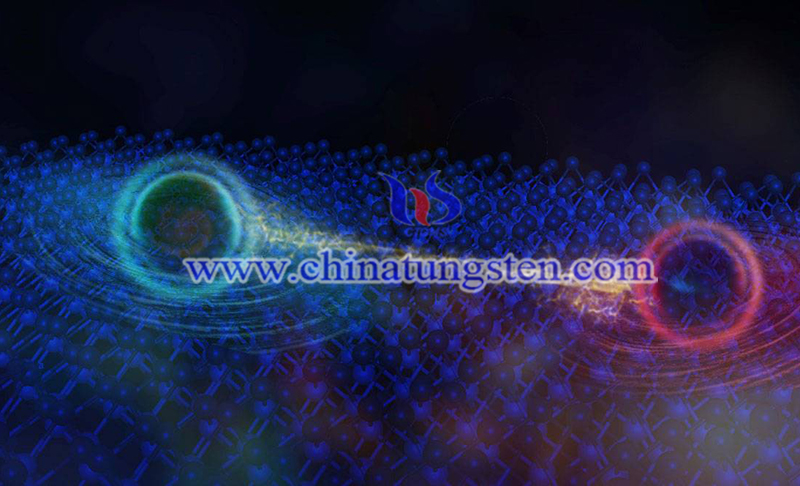Quantum Behavior in WTe2 Insulators Suggests Possible New Particles
- Details
- Category: Tungsten's News
- Published on Wednesday, 27 January 2021 22:03
Quantum behavior in tungsten ditelluride (WTe2) insulators indicates possible new particles. A team of physicists from the United States and Japan has experimentally observed a phenomenon called quantum oscillation in a two-dimensional topological insulator, the monolayer WTe2. The team's findings, published in Nature, hint at the existence of an entirely new type of quantum particle - a neutral fermion.
This discovery provides new insights into our understanding of the quantum world and also hints at the existence of a whole new kind of quantum particles. This discovery also challenges the long-standing distinction between metals and insulators, because in the established quantum theory of materials, insulators are believed to be unable to undergo quantum behavior.

"If our interpretations are correct, we are seeing a fundamentally new form of quantum matter," said Sanfeng Wu, assistant professor of physics at Princeton University and the senior author of a recent paper in Nature detailing this discovery. "We are now imagining a wholly new quantum world hidden in insulators. It's possible that we simply missed identifying them over the last several decades."
The observation of quantum oscillations has long been considered a hallmark of the difference between metals and insulators. In metals, electrons are highly mobile, and resistivity. Nearly a century ago, researchers observed that a magnetic field, coupled with very low temperatures, can cause electrons to shift from a "classical" state to a quantum state, causing oscillations in the metal's resistivity. In insulators, by contrast, electrons cannot move and the materials have very high resistivity, so quantum oscillations of this sort are not expected to occur, no matter the strength of the magnetic field applied.
The observation of quantum oscillations has long been considered a sign of the difference between metals and insulators. In metals, electrons are highly mobile as the weak resistance.
The researchers then set about measuring the resistivity of the monolayer tungsten ditelluride under magnetic fields. To their surprise, the resistivity of the insulator, despite being quite large, began to oscillate as the magnetic field was increased, indicating the shift into a quantum state. In effect, the material - a very strong insulator was exhibiting the most remarkable quantum property of a metal.
This discovery was made when researchers were studying a material called mercury cadmium tungstate, which they made into a two-dimensional material. They used standard scotch tape to gradually peel off or "scrape" these layers until the so-called monolayer, that is, a monoatomic thin layer was prepared.
Thick tungsten mercury cadmium telluride behaves like a metal. But once converted into a single layer, it becomes a very strong insulator. Mercury cadmium WTe2, a very strong insulator, actually exhibits the most significant quantum properties of metals.
Nevertheless, the team put forward a provocative hypothesis that there is a quantum substance with a neutral charge. The researchers said that "due to very strong interactions, electrons are organizing themselves to produce this new quantum matter."
The Princeton team plans to further study the quantum behavior of WTe2 and mercury cadmium telluride. They are particularly interested in verifying whether their hypothesis - about the existence of new quantum particles is true.
- Tungsten Manufacturer & Supplier, Chinatungsten Online: www.chinatungsten.com
- Tungsten News & Prices of China Tungsten Industry Association: www.ctia.com.cn
- Molybdenum News & Price: news.molybdenum.com.cn
- Tel.: 86 592 5129696; Fax: 86 592 5129797; Email: sales@chinatungsten.com



 sales@chinatungsten.com
sales@chinatungsten.com